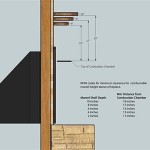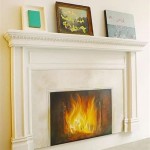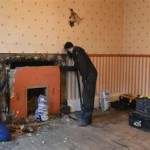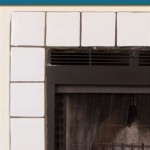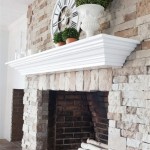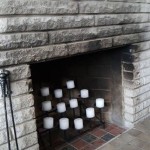Indoor Outdoor See-Thru Fireplace: A Unique Architectural Feature
An indoor outdoor see-thru fireplace, also known as a double-sided or peninsula fireplace, is a captivating architectural element that seamlessly connects interior and exterior living spaces. Beyond its aesthetic appeal, this type of fireplace offers functional benefits, acting as a focal point, providing warmth, and enhancing the ambiance of both indoor and outdoor areas. Its design allows for a visual connection and shared warmth between the two zones, making it a popular choice for homeowners seeking to create a fluid and integrated living experience.
The concept of a see-thru fireplace involves a single firebox visible from two adjacent sides, typically separating an indoor room from an outdoor patio, porch, or deck. This design opens up sightlines, creating a feeling of spaciousness and a more connected environment. The fire itself becomes a shared element, fostering a sense of unity and shared experience between those enjoying the indoor and outdoor areas.
Choosing the right indoor outdoor see-thru fireplace involves careful consideration of several factors, including the type of fuel (wood, gas, or electric), the size and style of the unit, and adherence to safety regulations and building codes. The architectural design of the house itself will also heavily influence the choice of fireplace; a modern home might call for a sleek, minimalist gas fireplace, while a rustic home might be better suited to a traditional wood-burning option.
Choosing the Right Fuel Source
One of the primary decisions revolves around the type of fuel that will power the fireplace. The most common options are wood, gas (natural gas or propane), and electricity. Each fuel source offers distinct advantages and disadvantages regarding cost, convenience, aesthetics, and environmental impact.
Wood-burning fireplaces offer the classic appeal of a real fire, with the crackling sound and authentic scent creating a cozy and inviting atmosphere. However, they also require significant effort for fuel procurement and storage, as well as regular cleaning to remove ash and creosote. Wood-burning fireplaces also produce emissions and require proper ventilation to ensure safe operation.
Gas fireplaces provide a convenient and relatively clean-burning alternative to wood. They ignite with the flip of a switch or the press of a button and offer adjustable flame height and heat output. Gas fireplaces are typically easier to maintain than wood-burning models. However, they require a gas line connection, which may involve additional installation costs. The aesthetic appeal of a gas flame may not be as authentic as a wood fire, although modern gas fireplaces offer increasingly realistic flame patterns and ember beds.
Electric fireplaces offer the most convenient and versatile option. They require no venting or gas line and can be installed virtually anywhere with an electrical outlet. Electric fireplaces produce no emissions and are very energy-efficient. While they lack the authentic flame of wood or gas, electric fireplaces offer a variety of realistic flame effects and can provide supplemental heat. They are often the easiest option to install and maintain, and can be a good choice where venting or fuel supply options are limited.
Design and Installation Considerations
The design and installation of an indoor outdoor see-thru fireplace require careful planning and execution to ensure safety and optimal performance. Building codes and regulations vary depending on the location and type of fuel used, so it is crucial to consult with qualified professionals, such as architects, contractors, and fireplace installers, to ensure compliance.
The fireplace's location should be carefully considered to maximize its visual impact and heating potential. It should be placed in a location that allows for clear visibility from both indoor and outdoor spaces. Structural integrity is also paramount; the fireplace must be properly supported to withstand its weight and any potential seismic activity. The surrounding materials should be non-combustible, such as brick, stone, or concrete, to prevent fire hazards.
Proper venting is essential for wood-burning and gas fireplaces to ensure that exhaust gases are safely expelled from the building. Venting requirements vary depending on the fireplace model and fuel type, so it is essential to follow the manufacturer's instructions and local building codes. Electric fireplaces do not require venting, making them easier to install in certain situations.
Aesthetic considerations also play a significant role in the design process. The fireplace should complement the overall style of the house and seamlessly integrate with both indoor and outdoor decor. The surrounding materials, such as the mantel, hearth, and facing, can be customized to create a unique and visually appealing focal point. The size and shape of the firebox should be proportionate to the size of the room and outdoor space.
Safety and Maintenance
Safety is of paramount importance when operating any type of fireplace. Regular maintenance is essential to ensure safe and efficient operation. Homeowners should follow the manufacturer's instructions for cleaning, inspection, and maintenance. Wood-burning fireplaces should be cleaned annually by a qualified chimney sweep to remove creosote buildup, which can pose a fire hazard. Gas fireplaces should be inspected annually by a qualified technician to check for gas leaks and ensure proper burner operation. Electric fireplaces should be inspected periodically to ensure that the electrical connections are secure and that the heating element is functioning properly.
Fire extinguishers should be readily accessible near the fireplace, and occupants should be familiar with their proper use. Smoke detectors and carbon monoxide detectors should be installed and maintained in accordance with local building codes. It is crucial to never leave a fire unattended and to keep flammable materials away from the fireplace.
Furthermore, it's important to consider the impact on air quality. While modern fireplaces are designed to burn cleaner than older models, they still contribute to air pollution, especially wood-burning variants. Using seasoned wood and ensuring proper airflow can help reduce emissions. Indoor air purifiers can also help mitigate the impact of fireplace emissions on indoor air quality.
For those with young children or pets, additional safety measures may be necessary, such as installing a fireplace screen or guard to prevent accidental burns. Educating children about fire safety is crucial to ensuring their safety around the fireplace.
Finally, consider the long-term maintenance costs associated with each type of fireplace. Wood-burning fireplaces require ongoing expenses for wood procurement and chimney sweeping. Gas fireplaces require periodic servicing and potential repairs. Electric fireplaces typically have lower maintenance costs, but the heating element may need to be replaced eventually.
The indoor outdoor see-thru fireplace serves as more than simply a heating appliance; it's an architectural statement, a social gathering point, and a bridge between the comfort of the indoors and the allure of the outdoors. Its ability to create a cohesive living space makes it an appealing addition to many homes, fostering a sense of connection and shared enjoyment. However, the selection, installation, and maintenance of such a fireplace necessitate careful consideration of fuel type, design, safety, and compliance with local regulations to ensure a lasting and enjoyable home feature.

36 Fortress Indoor Outdoor Intellifire See Thru Direct Vent Fireplace Electronic Ignition Monessen

See Thru Linear Gas Fireplaces Modern The Davinci Collection

Rushmore 40 Inch See Through Direct Vent Fireplace Fine S Gas

Indoor Outdoor Multi View Gas Fireplace Direct Vent

Callaway See Thru Outdoor Linear Gas Fireplace Kozy Heat
Outdoor Lifestyles Fortress See Through Indoor Gas Fireplace Majestic S

Double Sided Indoor Outdoor Fireplace Heat Glo

Town Country Ws54 Indoor Outdoor See Thru Fireplace Vancouver Gas Fireplaces

Superior Drt63st See Through Direct Vent Indoor Outdoor Gas Fireplace

Flare See Through Direct Vent Indoor Outdoor Modern Fireplace Toronto Home Comfort
Related Posts

